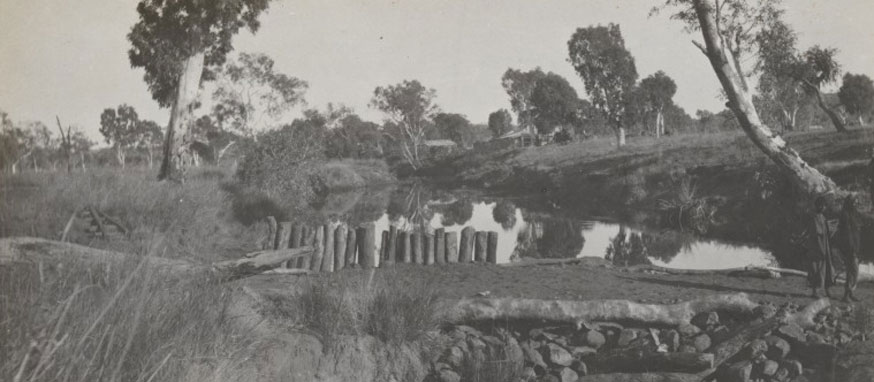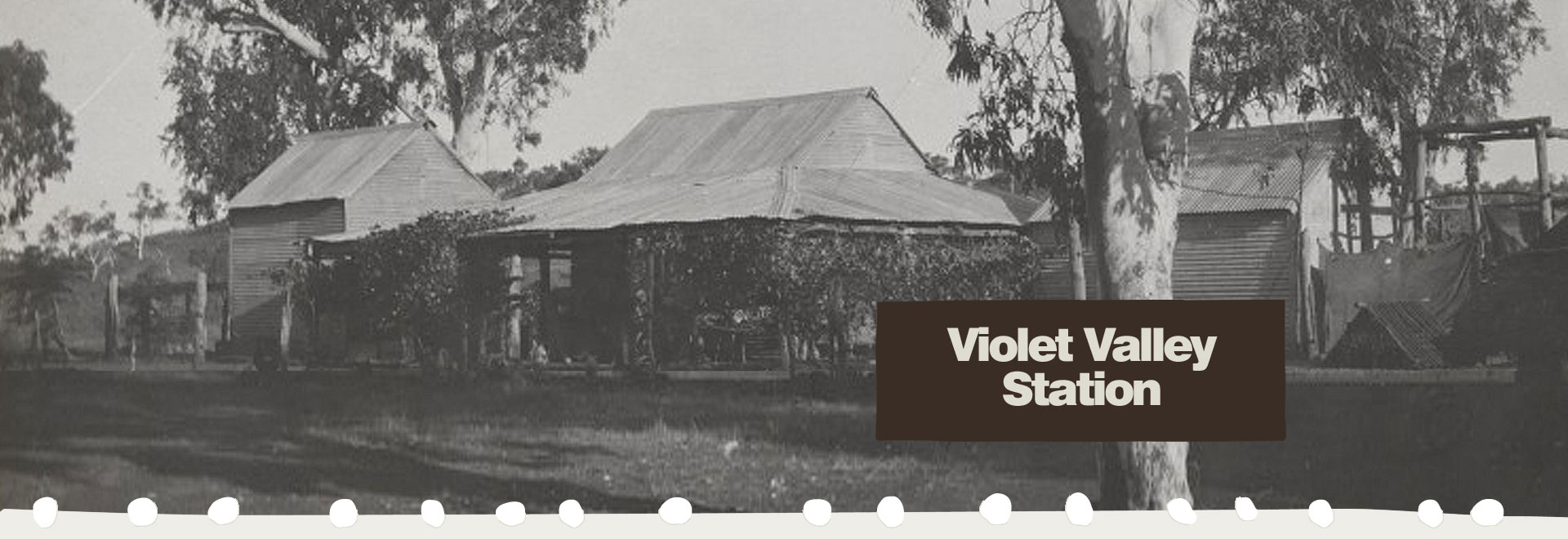The modern history of Violet Valley
Violet Valley holds an important place in the recent history of Gija country and the East Kimberley. Colonisation and the take up of pastoral leases by white settlers in the late 1800s brought immediate impact on the traditional lands of Gija people. Over grazing and spoiled waterholes followed as cattle competed with native animals for food and water and the local ecology changed. When Gija people viewed the introduced cattle as a source of food, inevitable conflict resulted. Confrontation followed with the brutality of this period illustrated by reported and unreported massacres of the original occupants of the country. One of the responses by the then Department of Native Welfare was to set up a ration station at Turkey Creek in 1901, then similar set ups at Moola Bulla and Violet Valley. Gija people as well as Indigenous peoples from other parts of the Kimberley either moved to or were sent to the ration stations. Life was tough as settlers sought to introduce the ways of white people. The values of traditional culture were not recognized. People on the ration stations were prevented from visiting cultural and ceremonial sites and languages were repressed. The primary purpose of the ration stations was to get Gija and other people off their traditional lands. The ration stations closed in the 1950s but the life and settlement of Gija people was left forever changed. Gija people today struggle as a result of those years. The Violet Valley campground is one step in getting Gija people back living and working on traditional country and establishing connection again with cultural and ceremonial sites.

